Abstract
Cultures of human embryonic lung (HEL) cells in different physiological states were studied for their susceptibility to infection with human cytomegalovirus (CMV) with respect to production of infectious virus, synthesis of viral antigens, and virus-induced stimulation of cellular DNA synthesis. In general, subconfluent, actively growing cells yielded higher amounts of infectious virus than did confluent contact-inhibited cells. The higher yield of infectious virus was correlated with a greater percentage of cells producing viral antigens within the first 48 h after infection. In confluent cultures, 25 to 50% of the cells produced viral antigens within the first 48 h postinfection. This proportion did not change over a 10-fold range of multiplicity of infection, indicating that many of the cells in confluent cultures did not support productive infection. However, virtually all the cells in subconfluent cultures were susceptible. Also, in contrast to herpes simplex virus and pseudorabies virus, infectious CMV is not produced by cells treated with 5-fluorouracil and thymidine. Virus-induced stimulation of cellular DNA synthesis in cells infected at high multiplicities of infection could be detected only in confluent cultures, in which cellular DNA synthesis had been previously suppressed, but could not be detected in similarly treated cultures of subconfluent cells. The lack of detectable stimulation of cellular DNA synthesis in the latter was related to the fact that practically all the cells in the culture synthesized viral antigens within the first 48 h after infection, productive infection and detectable synthesis of cellular DNA being mutually exclusive.
Full text
PDF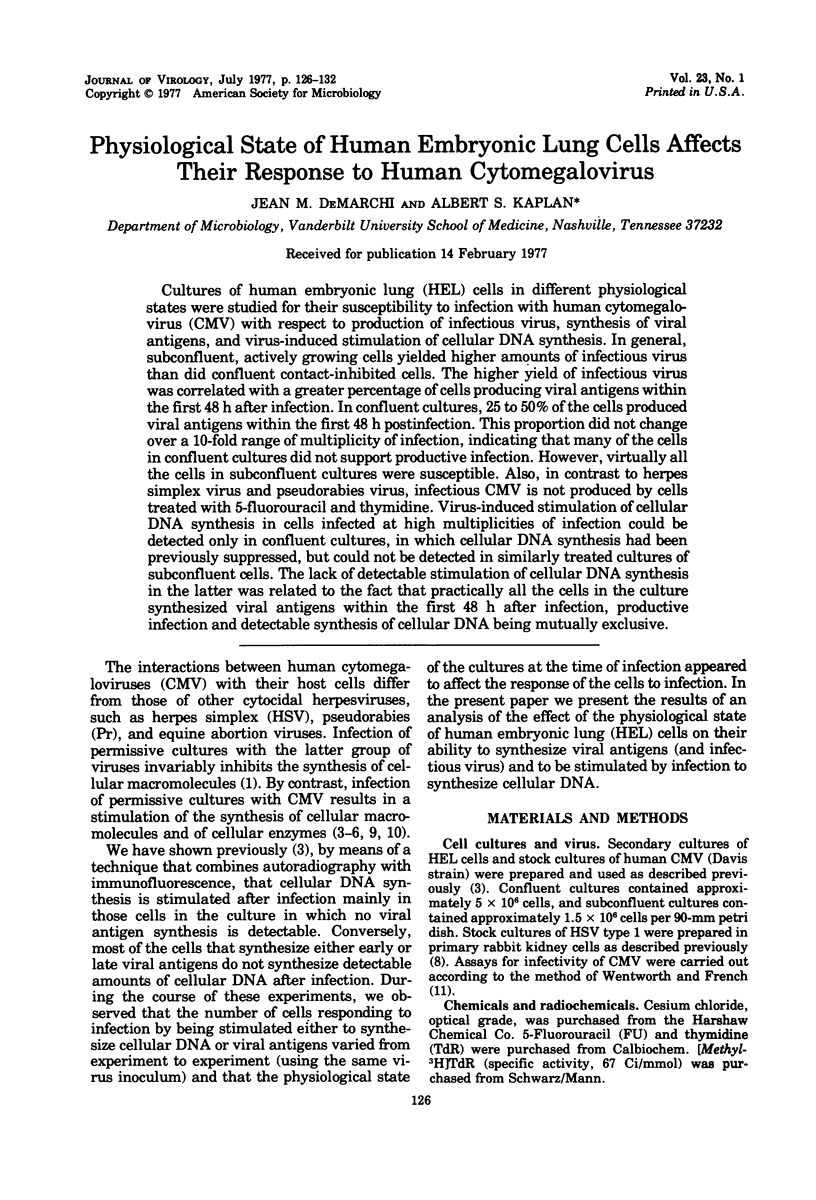
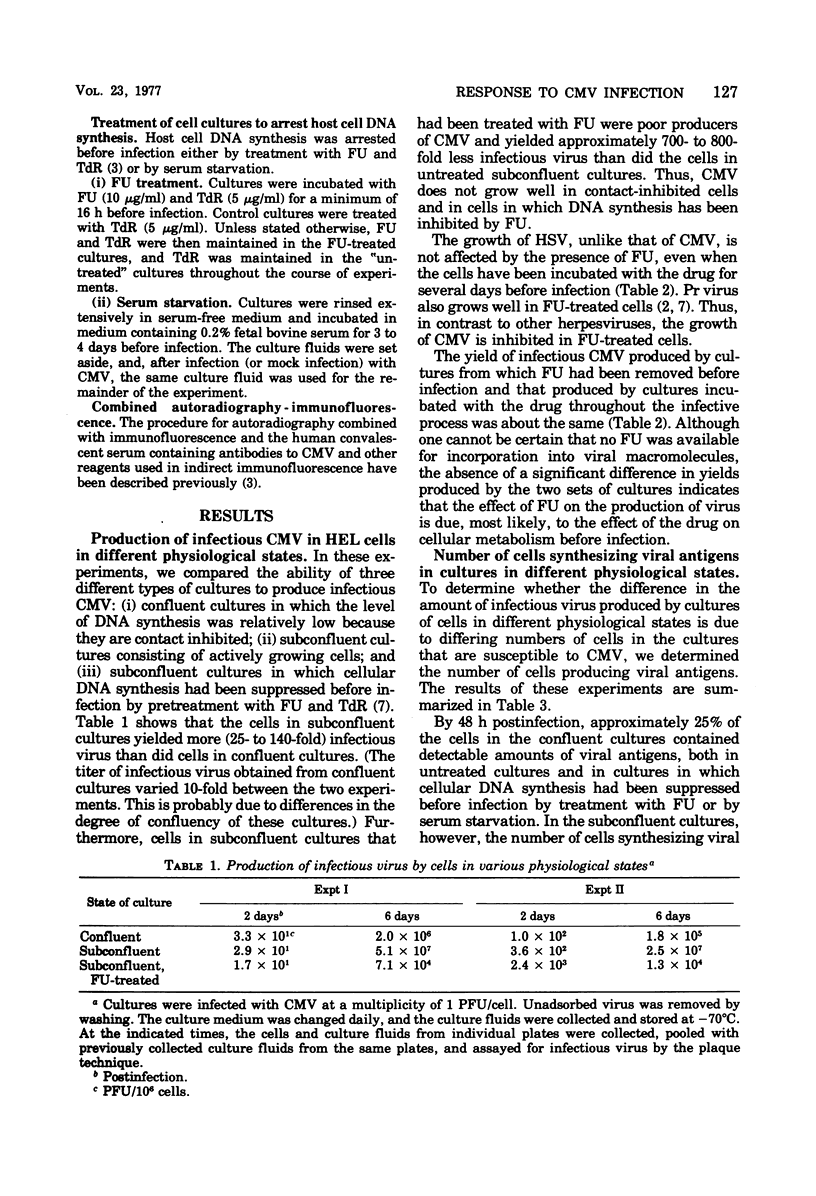
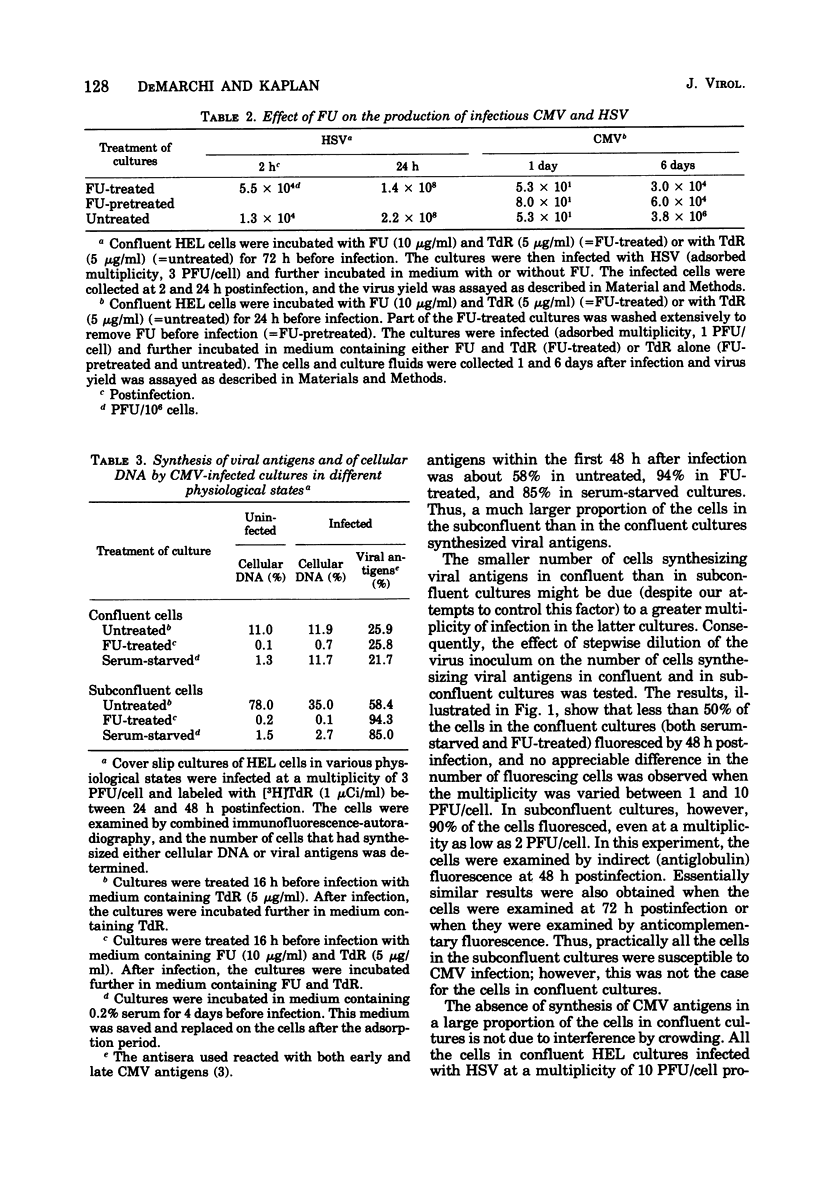
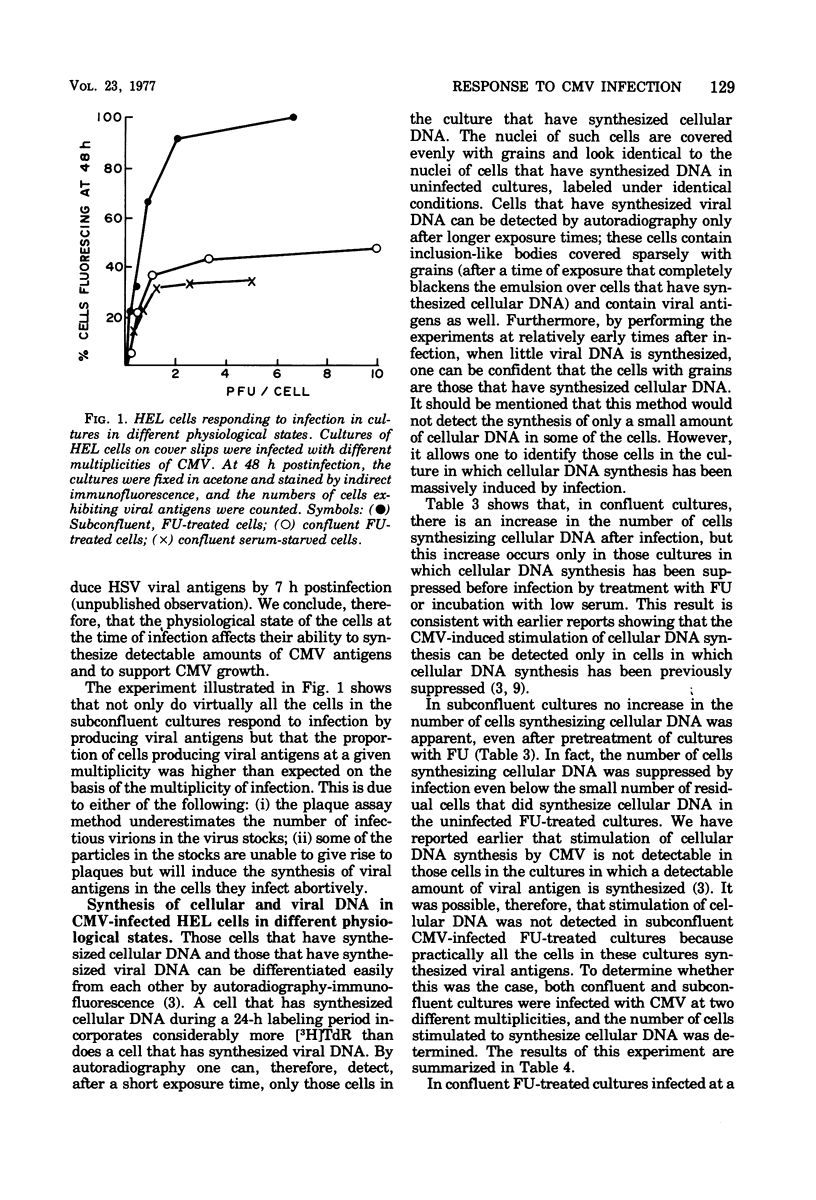
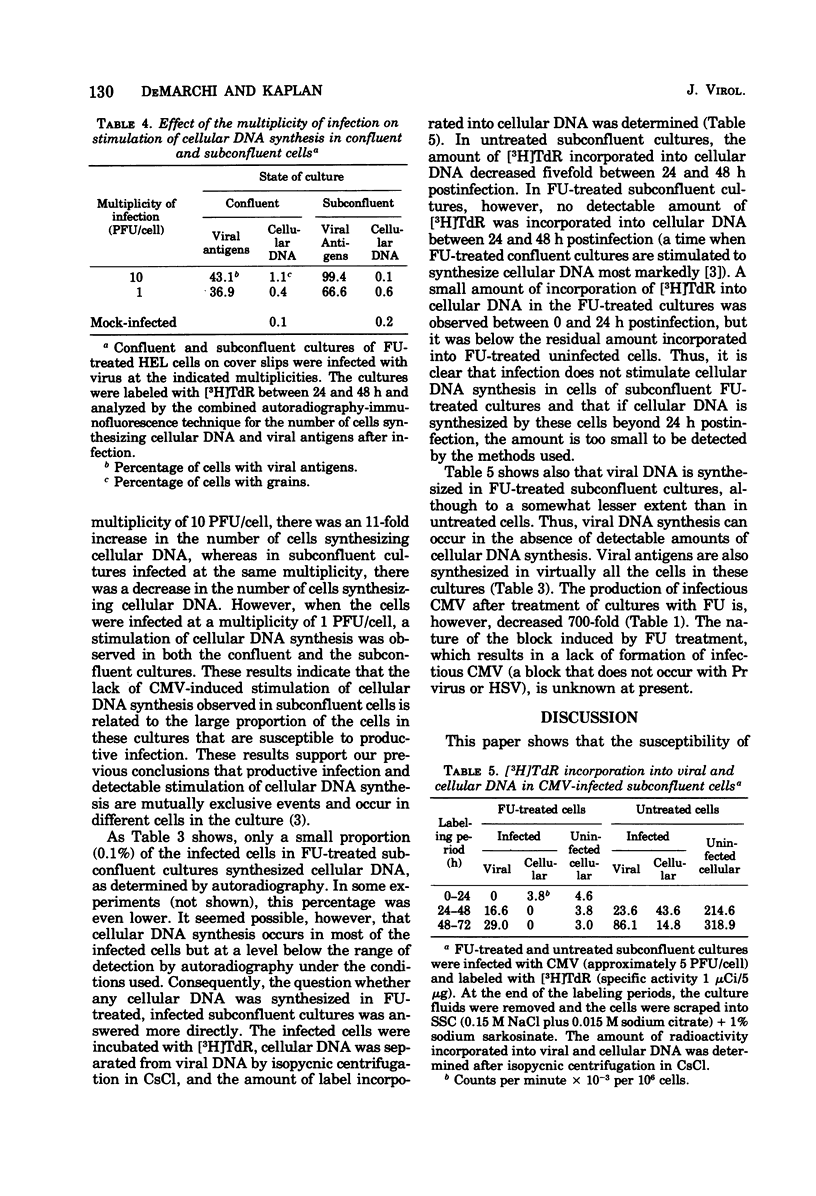
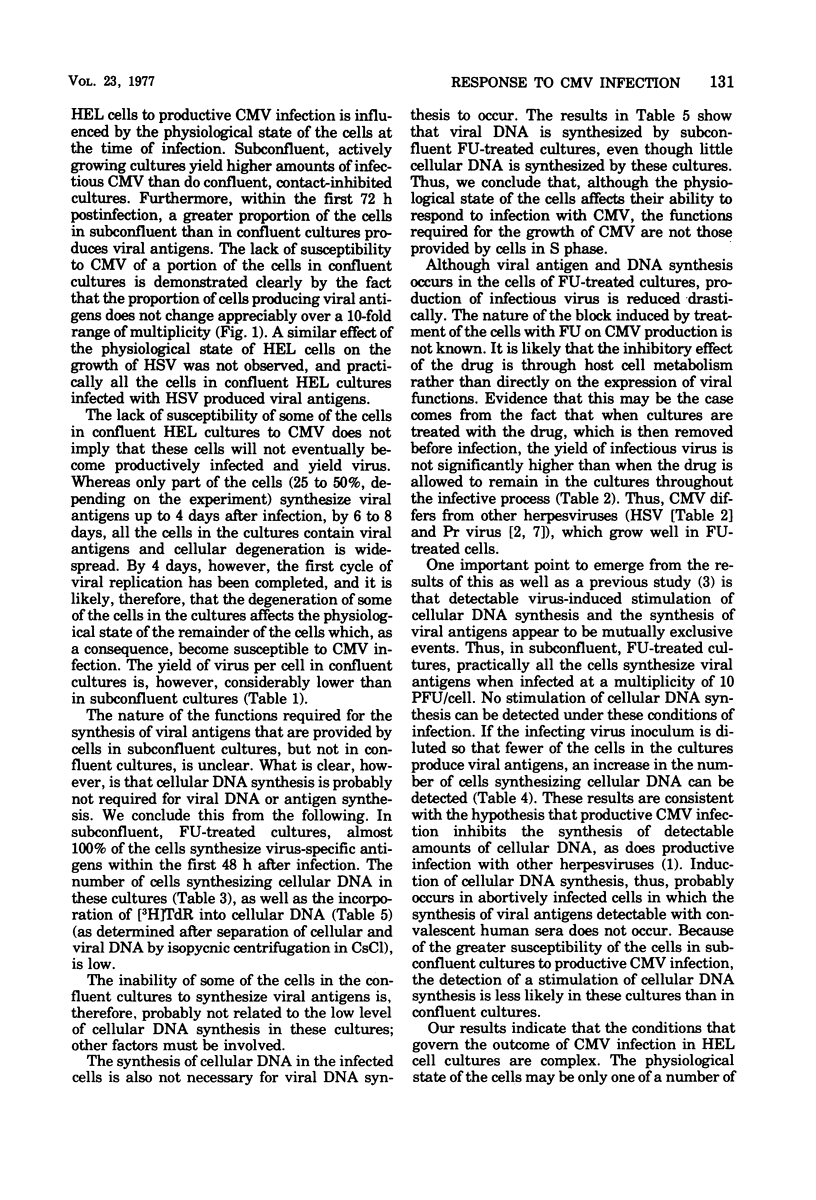
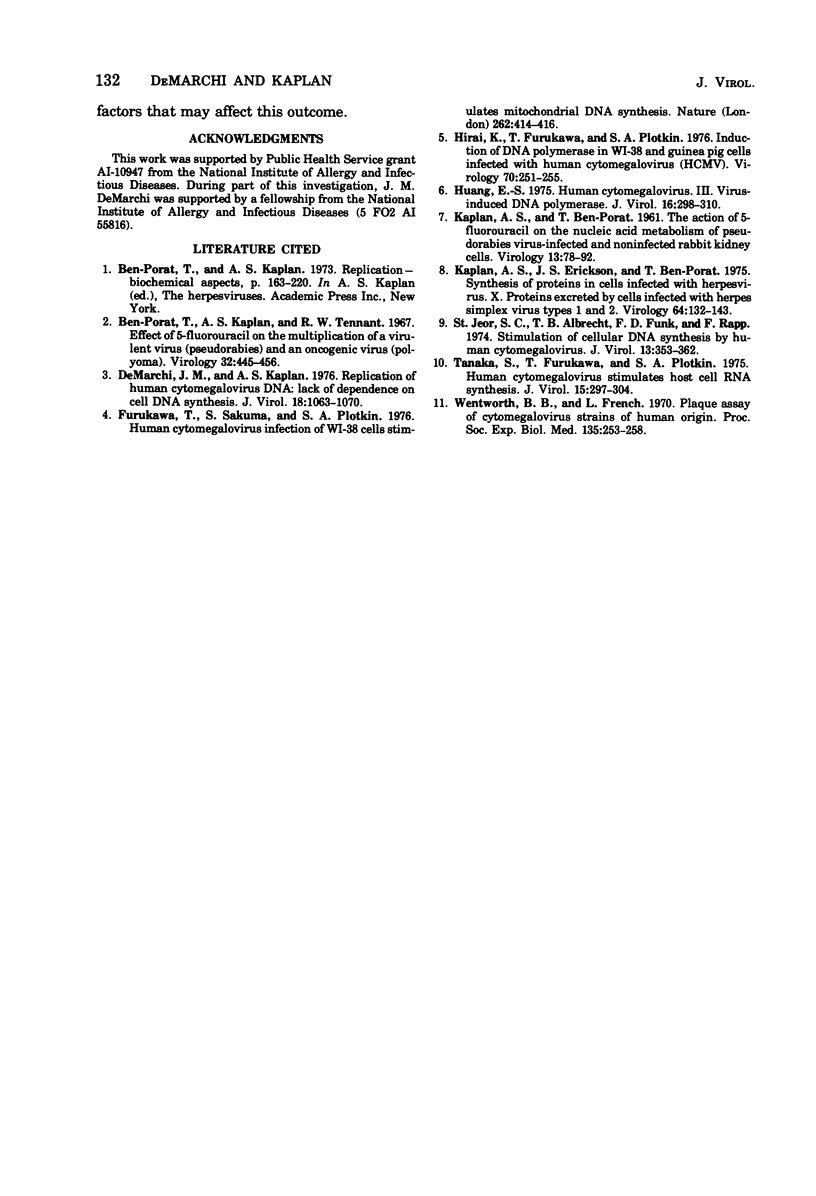
Selected References
These references are in PubMed. This may not be the complete list of references from this article.
- Ben-Porat T., Kaplan A. S., Tennant R. W. Effect of 5-fluorouracil on the multiplication of a virulent virus (pseudorabies) and an oncogenic virus (polyoma). Virology. 1967 Jul;32(3):445–456. doi: 10.1016/0042-6822(67)90296-6. [DOI] [PubMed] [Google Scholar]
- DeMarchi J. M., Kaplan A. S. Replication of human cytomegalovirus DNA: lack of dependence on cell DNA synthesis. J Virol. 1976 Jun;18(3):1063–1070. doi: 10.1128/jvi.18.3.1063-1070.1976. [DOI] [PMC free article] [PubMed] [Google Scholar]
- Furukawa T., Sakuma S., Plotkin S. A. Human cytomegalovirus infection of WI-38 cells stimulates mitochondrial DNA synthesis. Nature. 1976 Jul 29;262(5567):414–416. doi: 10.1038/262414a0. [DOI] [PubMed] [Google Scholar]
- Hirai K., Furukawa T., Plotkin S. A. Induction of DNA Polymerase in WI-38 and guinea pig cells infected with human cytomegalovirus (HCMV). Virology. 1976 Mar;70(1):251–255. doi: 10.1016/0042-6822(76)90266-x. [DOI] [PubMed] [Google Scholar]
- Huang E. S. Human cytomegalovirus. III. Virus-induced DNA polymerase. J Virol. 1975 Aug;16(2):298–310. doi: 10.1128/jvi.16.2.298-310.1975. [DOI] [PMC free article] [PubMed] [Google Scholar]
- Jeor S. C., Albrecht T. B., Funk F. D., Rapp F. Stimulation of cellular DNA synthesis by human cytomegalovirus. J Virol. 1974 Feb;13(2):353–362. doi: 10.1128/jvi.13.2.353-362.1974. [DOI] [PMC free article] [PubMed] [Google Scholar]
- KAPLAN A. S., BEN-PORAT T. The action of 5-fluorouracil on the nucleic acid metabolism of pseudorabies virus-infected and noninfected rabbit kidney cells. Virology. 1961 Jan;13:78–92. doi: 10.1016/0042-6822(61)90034-4. [DOI] [PubMed] [Google Scholar]
- Kaplan A. S., Erickson J. S., Ben-Porat T. Synthesis of proteins in cells infected with herpesvirus. X. Proteins excreted by cells infected with herpes simplex virus, types 1 and 2. Virology. 1975 Mar;64(1):132–143. doi: 10.1016/0042-6822(75)90085-9. [DOI] [PubMed] [Google Scholar]
- Tanaka S., Furukawa T., Plotkin S. A. Human cytomegalovirus stimulates host cell RNA synthesis. J Virol. 1975 Feb;15(2):297–304. doi: 10.1128/jvi.15.2.297-304.1975. [DOI] [PMC free article] [PubMed] [Google Scholar]
- Wentworth B. B., French L. Plaque assay of cytomegalovirus strains of human origin. Proc Soc Exp Biol Med. 1970 Nov;135(2):253–258. doi: 10.3181/00379727-135-35031. [DOI] [PubMed] [Google Scholar]


